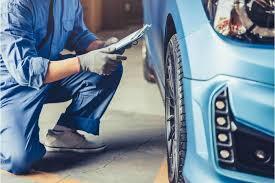
Car inspections are an essential part of vehicle maintenance, ensuring that your car remains safe, reliable, and efficient. Whether you’re a first-time car owner or someone who’s had a car for years, understanding the car inspection process can help you better prepare and take full advantage of this crucial service. Here’s a comprehensive guide to understanding the car inspection process.
1. Why Car Inspections Are Important
Before diving into the process, it’s essential to understand why car inspections matter. Regular inspections help identify potential issues before they become major problems, enhance vehicle safety, improve fuel efficiency, and extend the lifespan of your car. They also ensure compliance with local regulations and can help maintain your vehicle’s resale value.
- Types of Car Inspections
- Routine Maintenance Inspections
These are regular checks performed to keep your car running smoothly. They typically include oil changes, tire rotations, brake inspections, and fluid level checks. Most car manufacturers recommend routine inspections every 5,000 to 10,000 kilometers.
- Comprehensive Inspections
Comprehensive inspections are more thorough and usually conducted annually or before buying or selling a car. They cover all major systems and components, including the engine, transmission, brakes, suspension, steering, exhaust, and electrical systems.
- State or Emissions Inspections
In many regions, cars must pass state-mandated inspections to ensure they meet safety and emissions standards. These inspections are typically required annually or biennially and may include emissions testing to ensure the car isn’t polluting excessively.
- Preparing for a Car Inspection
To make the most out of your car inspection, follow these preparation steps:
- Gather Documentation
Bring your vehicle’s registration, insurance documents, and any maintenance records. Having these on hand can help the inspector understand your car’s history and any previous issues.
- Clean Your Car
A clean car, both inside and out, allows inspectors to access components more easily and ensures they can see potential issues without obstruction.
- Note Any Concerns
If you’ve noticed any unusual noises, smells, or performance issues, make a note of them and inform the inspector. This helps them focus on areas that might need special attention.
- The Inspection Process
During a car inspection, the mechanic or inspector will go through several key areas of your vehicle:
- Exterior Check
Lights: Headlights, brake lights, turn signals, and hazard lights are checked for functionality.
Windshield and Windows: Inspectors look for cracks and check the condition of wipers.
Tires: Tread depth, tire pressure, and overall condition are assessed.
- Under the Hood
Fluids: Levels of oil, coolant, brake fluid, power steering fluid, and windshield washer fluid are checked and topped off if necessary.
Battery: The battery’s condition and connections are inspected.
Belts and Hoses: Inspectors look for signs of wear and tear.
- Interior Check
Seat Belts: Ensure all seat belts are functioning correctly.
Dashboard Indicators: Inspectors check that all warning lights and indicators work properly.
HVAC System: The heating, ventilation, and air conditioning system is tested.
- Under the Car
Brakes: The condition of brake pads, rotors, and brake lines are assessed.
Suspension and Steering: Components are checked for wear and damage.
Exhaust System: The exhaust system is inspected for leaks and proper operation.
- Test Drive
Some inspections include a test drive to evaluate the car’s performance, including acceleration, braking, and handling.
- Post-Inspection
After the inspection, the mechanic will provide a detailed report outlining any issues found and recommended repairs. This report typically includes:
Immediate Repairs: Critical issues that need urgent attention.
Upcoming Maintenance: Components that are wearing out and may need attention soon.
Overall Condition: A summary of the car’s general state.
- Understanding the Report
Ask the inspector to explain any findings you don’t understand. Knowing the severity and urgency of each issue can help you prioritize repairs.
- Scheduling Repairs
Based on the inspection report, schedule any necessary repairs with a trusted mechanic. Addressing issues promptly can prevent them from becoming more severe and costly.
Conclusion
Understanding the car inspection process empowers you as a car owner to keep your vehicle in top condition. Regular inspections not only ensure your car’s safety and reliability but also save you money by preventing major repairs and improving fuel efficiency. By preparing for inspections and acting on the findings, you can enjoy a smoother, safer driving experience.
For comprehensive car inspections in Karachi, trust FameWheels. Our experienced technicians provide thorough inspections to keep your car running efficiently and safely. Schedule your inspection today and drive with confidence!